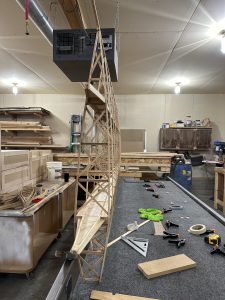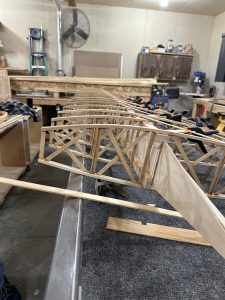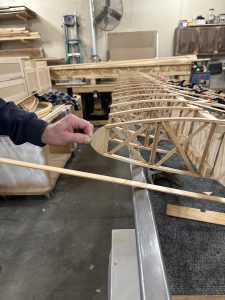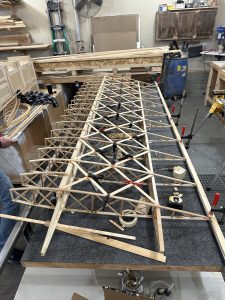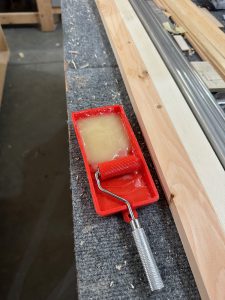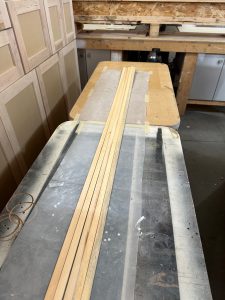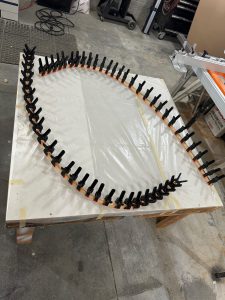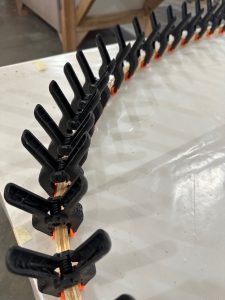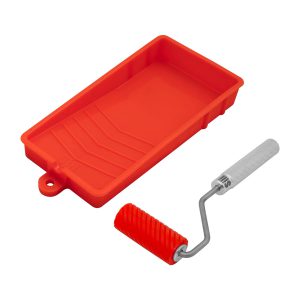I feel like we accomplished a lot today. This morning Stu and I unclamped the partially assembled wing and found that it was already quite stiff and of course perfectly square. The epoxy where the ribs were glued to the trailing edge material was pretty well stuck to the steel rail, but the careful use of a utility knife blade between wood and steel popped those spots loose. Next time we’ll use poly or waxed paper. Stu sanded the rail to remove the epoxy and applied a couple coats of paste wax.
We stood the wing panel on its nose and slid the main spar into place, then glued and pinned the ribs to the bottom of the spar. The first rib was placed flush with the end of the spar, and the rese were once again set in place using the 11.5″ gauge block that we’d used for the rear spar rib spacing. It perfectly matches the notch spacing on the trailing edge, so everything remains perfectly spaced and square. Once that was done, we rotated it back horizontal and re-clamped the trailing edge to the rail. Now I cut some short lengths of laminating strip material to act as shims between the spar cap and rib caps, so we glued and pinned the ribs to the top rib cap.
With that done, we glued the false ribs in place using a 5.5″ gauge block. Lile the main ribs, these were glued and pinned to the bottom of the spar, then shimmed, glued, and pinned to the top.
As I had some glue left over, I decided to attack the geodetic bracing. I hadn’t really intended to do it all, but in the end all of the top surface geodetic braces are glued and clamped in place. We’ll do the bottom surface after the compression struts are done. What remains is the compression struts, bottom geodetics, nose ribs and plywood, and ailerons. And that’s where it’s all going to get messy. When I modified the ribs to clear the rear spars in the upper wings, I inadvertently put the cross braces right where the aileron torque tubes need to go. Oops. Not a problem on the upper wing, but it is on the lower wing. I think my fix for this will be to simply remove the pair if X braces (that I just installed) on the non-aileron ribs, and glue on a side plate cut from 1/16 plywood to stiffen that part of the rib. Then I can just have a hole for the torque tube. This should make the rear portion of those ribs substantially stronger than using the geodetic bracing, and will be only very slightly heavier. The upper wings should not need this modification, only the lower wings.
The last two wingtip bows came off the forms and are ready to install, so we removed all the screws from the table and stacked them until it’s time to finish them off. We’ll likely sand the top and bottom surfaces to remove the excess epoxy, then run the outer edges through the router table for a 3/8 radius top and bottom.

